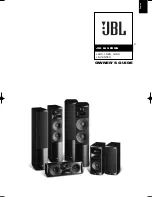
a.
Start by visualizing where the wire will need to run and consider various wiring strategies:
Attic:
With in-ceiling speakers, this approach is the most popular and usually the easiest to install. It will
probably involve drilling through the header, a stud that caps the top of the wall, with a 3/8” to 1” “spade”
bit above the receiver. If you choose in-wall placement rather than in-ceiling, a similar hole will probably
be needed above the speaker locations as well.
Running the wires from your electronics to the speaker locations may be the most diffi cult step of all —
some thoughtful planning now could save some headaches later.
Step 3. Plan Your Wire Run
8
Fig. B
Fig. A
6-LCR In-Wall Home Theater Speaker
If there’s no fi berglass insulation in the hole awaiting your speaker, adding two square feet behind the speaker
will help its bass performance. If there is existing fi berglass but it has paper backing, remove the paper. It’s
OK to let the speaker’s magnet push against the fi berglass. NOTE: We strongly recommend wearing a long
sleeved shirt and dust mask while working with fi berglass.
Step 6. Install the Speaker
13
In-wall speakers
a.
Attach the speaker wire to the push terminals on back
of the speaker.
It’s very important to wire them with the
correct negative/positive polarity.
Be sure that the wire
attached to the positive terminal (+, red) on the speaker
connects to the positive terminal on receiver. Similarly, the
negative terminal (-, black) on the speaker must connect
to the negative terminal on the receiver. You can use the
stripe, differing colors or “+++” markings on one of the
wire strands to keep track.
b.
Be sure the mounting feet are turned inward to clear the
opening and then insert the frame into the ceiling or wall.
Make sure the speaker is sitting squarely, then tighten
the six screws on the inside of the frame. As you tighten
these screws, the feet will automatically fl ip to an outward
position, clamping the drywall between the feet and the
fl ange of the frame. If you’re using a powered screw gun,
fi nish tightening with a hand screwdriver to avoid over-
tightening. Tighten just enough for the fl ange to become
snug against the wall.
(Over-tightening may warp the baffl e,
crack the wall, cause the fl ange to distort, and make the grill
diffi cult to install.)
c.
Mount the white frame into the hole you just cut.
Red
tab (+)
Black tab (-)






























